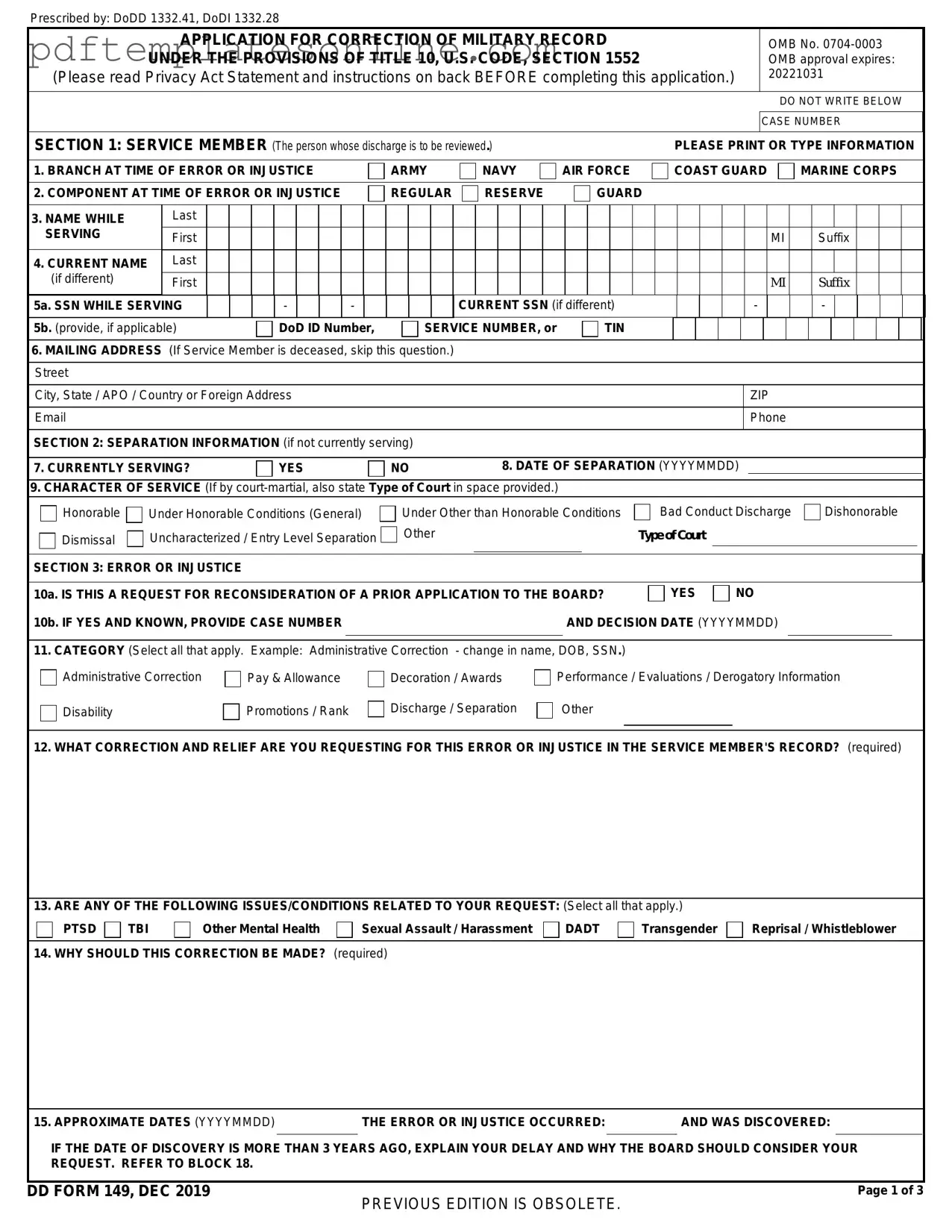When filling out the DD 149 form, many individuals make common mistakes that can delay or complicate their claims. One frequent error is not providing sufficient personal information. Ensure that all sections requiring your name, address, and contact details are filled out completely. Missing or incorrect information can lead to processing delays.
Another mistake involves the selection of the appropriate type of claim. Many people either choose the wrong category or fail to check all applicable boxes. Carefully review the options available and ensure that you select the ones that accurately reflect your situation. This step is crucial for the correct handling of your claim.
Inadequate explanation of your request is also a common issue. The form requires you to provide a clear and concise statement of why you are submitting the DD 149. Vague or incomplete explanations can result in rejection. Take the time to articulate your reasons clearly, including any relevant facts or circumstances.
People often overlook the importance of supporting documentation. Failing to include necessary documents can lead to immediate denial of your claim. Gather all relevant paperwork, such as military records or prior correspondence, and attach them to your submission. This will strengthen your case and expedite the review process.
Another mistake is not signing the form. It may seem simple, but many forget to provide their signature. A missing signature can render the form invalid. Always double-check that you have signed and dated the form before submission.
Many individuals also fail to keep copies of their submitted forms. This oversight can create problems if you need to follow up or appeal a decision. Make sure to retain a copy of the completed DD 149 for your records. This will help you track your claim and provide necessary information in the future.
Lastly, some people neglect to follow up on their claims. After submitting the DD 149, it’s essential to check on the status of your request. Regular follow-ups can help ensure that your claim is being processed and can prompt action if there are delays. Staying proactive is key to navigating the claims process effectively.
